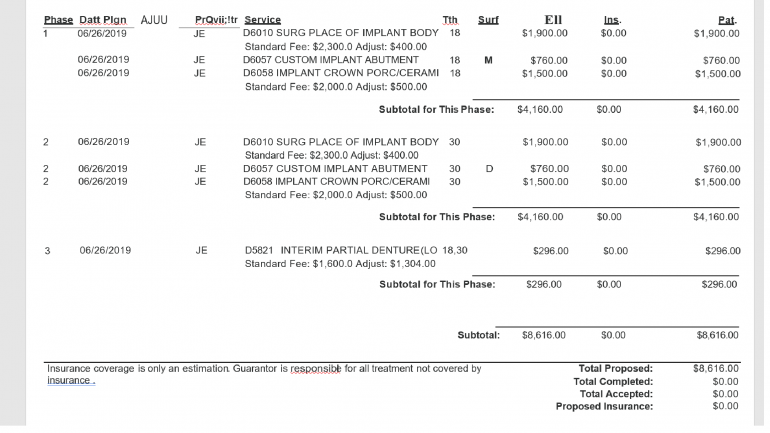
Dental Code D8696: Repair of Orthodontic Appliance – Maxillary
Dental Code D8696 pertains to the repair of orthodontic appliances specifically in the maxillary region, which refers to the upper jaw. This code is used for billing purposes when repairing and making necessary adjustments to orthodontic appliances that are responsible for correcting dental misalignments in the upper jaw.
Assessment and Examination
The initial step in the repair of an orthodontic appliance in the maxillary region involves a thorough assessment and examination. The dentist carefully evaluates the appliance's overall condition and checks for any signs of damage or wear. They meticulously examine the wires, brackets, and other components to identify any issues that may require repair. Additionally, the dentist assesses the patient's oral health, which includes examining the teeth, gums, and surrounding tissues. This comprehensive evaluation ensures that the repair process aligns with the specific needs of the patient, taking into account any pre-existing dental conditions or concerns.
Diagnosis and Treatment Planning
Following the examination, the dentist proceeds with diagnosing the specific issues affecting the orthodontic appliance in the maxillary region. Through their expertise and evaluation of the appliance, they identify problems such as broken wires, loose brackets, or misaligned components. This diagnosis is crucial in determining the appropriate course of action for repairs. Based on the diagnosis, the dentist develops a comprehensive treatment plan that outlines the necessary repairs and adjustments required. The treatment plan takes into consideration the patient's oral health, the severity of the appliance damage, and the desired orthodontic outcome.
Preparation
Before initiating the repair process, the dentist takes necessary steps to prepare the patient and the orthodontic appliance. This meticulous preparation ensures a smooth and efficient repair procedure. The dentist may begin by isolating the affected area to focus solely on the maxillary region. This isolation may involve the use of dental barriers or specialized tools to create a clear work area. Adequate access to the orthodontic appliance is ensured, allowing the dentist to perform the necessary repairs without any obstructions. During this preparation phase, the dentist also implements protective measures to safeguard the surrounding teeth and soft tissues from any potential damage or irritation during the repair process.
Repairing the Orthodontic Appliance
The repair procedure itself encompasses various techniques and measures, depending on the nature of the damage or malfunction. For instance, if a bracket is broken or dislodged, the dentist carefully removes the damaged component and replaces it with a new one. Loose wires, on the other hand, may require reattachment or adjustment to ensure proper alignment and tension. Other repairs may involve fixing or replacing other components of the orthodontic appliance, such as elastic bands or springs. The dentist meticulously selects appropriate dental materials and techniques to restore the functionality and structural integrity of the orthodontic appliance. They ensure that the repaired appliance functions optimally and supports the desired movement of teeth towards correct alignment.
Adjustments and Refinements
After completing the repair work, the dentist proceeds with necessary adjustments to optimize the orthodontic appliance's functionality. This crucial step ensures that the appliance continues to exert the desired forces on the teeth to facilitate their movement. The dentist may align wires, adjust brackets, or modify other components to fine-tune the appliance's performance. These adjustments are made with precision and consideration for the patient's specific orthodontic needs. By refining the appliance's configuration, the dentist aims to achieve the intended orthodontic outcome, such as closing gaps, correcting crowding, or aligning the bite.
Oral Hygiene and Aftercare Instructions
Upon finalizing the repairs and adjustments, the dentist provides the patient with comprehensive oral hygiene instructions. These instructions serve to maintain the overall oral health during orthodontic treatment. The dentist guides the patient on proper brushing and flossing techniques, emphasizing the importance of thorough plaque removal to prevent tooth decay and gum problems. Additionally, the patient receives guidance on maintaining the orthodontic appliance, such as avoiding certain foods that may damage or dislodge the appliance. The dentist also stresses the importance of regular follow-up visits to monitor the progress of the orthodontic treatment and ensure that the appliance continues to function optimally, allowing for successful alignment of the teeth.
Summary of Dental Code D8696
Dental Code D8696 involves the repair of orthodontic appliances in the maxillary region, specifically focusing on the upper jaw. The procedure encompasses a series of meticulous steps, commencing with a thorough assessment and examination of the appliance and the patient's oral health. Following the diagnosis, a comprehensive treatment plan is formulated, and the necessary repairs are performed. Adjustments are made to optimize the appliance's functionality, and the patient is educated on proper oral hygiene practices. By adhering to this meticulous and informative process, dental professionals can effectively repair orthodontic appliances in the maxillary region, thereby aiding in the successful alignment of teeth and the attainment of a healthy, beautiful smile.
Say goodbye to dental care stress with Dr. BestPrice! It's time to relax and enjoy the benefits of quality care at affordable prices.
